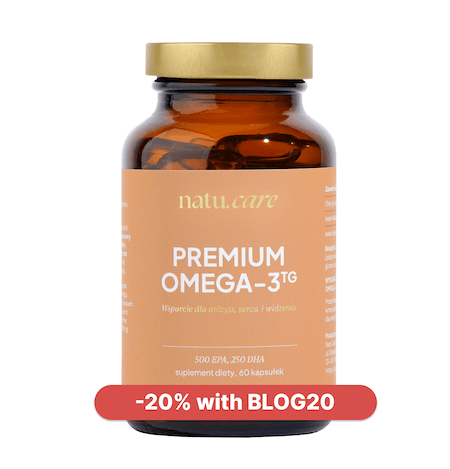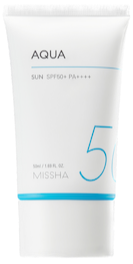Acne: common, hormonal, rosacea and others [symptoms, treatment].
See how to treat and manage the different types of acne.


Learn more about our editorial process
.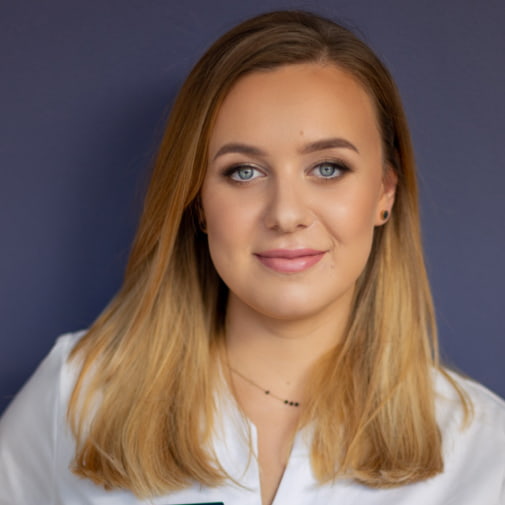

Learn more about our editorial process
.

Learn more about our editorial process
.

Learn more about our editorial process
.![Acne: common, hormonal, rosacea and others [symptoms, treatment].](https://cdn-resources.natu.care/uploads/1/portrait_young_woman_being_confident_with_her_acne_1_3183cb2467.jpg)
Why you can trust us
Articles on Natu.Care are written based on scientific research, data from government websites and other reliable sources. The texts are written in cooperation with doctors, nutritionists and other health and beauty experts. Articles are reviewed before publication and during significant updates.
.Learn more about our editorial process
.Information about advertisements
Content on Natu.Care may contain links to products from the sale of which we may receive a commission. When creating content, we adhere to high editorial standards and take care to be objective about the products discussed. The presence of affiliate links is not dictated by our partners, and we select the products we review ourselves completely independently.
.Learn more about our terms and Conditions
.Most varieties of it are not dangerous to health, but it makes life miserable every day for those who suffer from it. It can lower self-esteem and affect mood.
About 85% of teenagers and young adults up to the age of 25 struggle with acne. Increasingly, people in their 30s are also affected.
And although it is colloquially accepted to say 'acne' for every pimple, it is actually a group of skin conditions with many different symptoms, causes and completely different treatments.
Acne is a disease of the skin.
From this article you will learn:
- What is acne and what are the types. .
- How to treat the different types of acne. .
- How to care for skin affected by these conditions.
- How to treat acne.
- Whether diet has an effect on acne.
- How to treat acne.
- What you can do at home to alleviate symptoms.
- What you can do at home to alleviate symptoms.
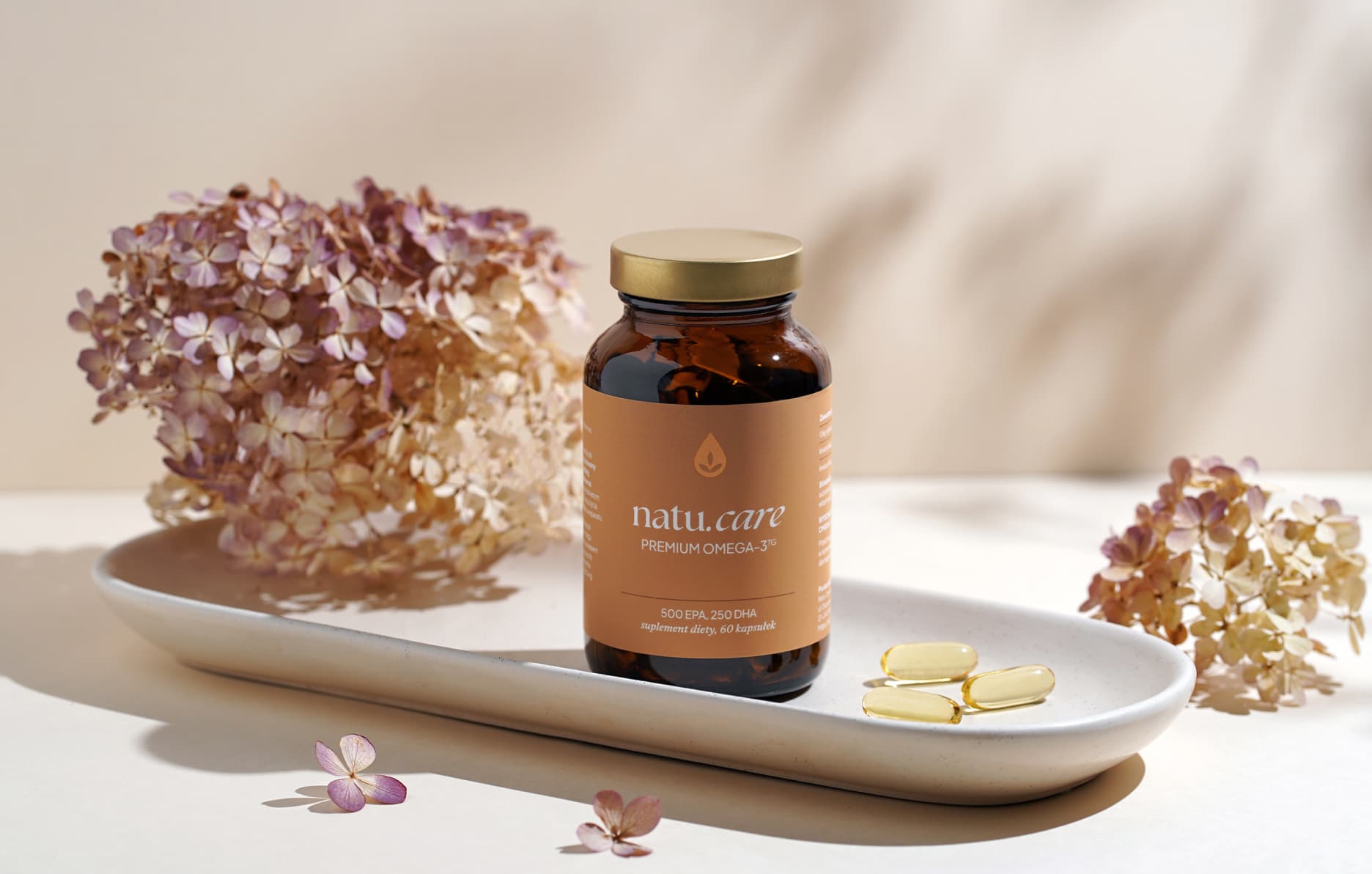
Sprawdź, za co pokochały go tysiące klientek Natu.Care Premium Omega-3ᵀᴳ -15% z kodem BLOG15
Natu.Care Omega-3ᵀᴳ Premium
Natu.Care Omega-3ᵀᴳ Premium dla zdrowia serca, mózgu i odporności. Najlepsza przyswajalność. Optymalna dawka 750 mg. Przebadana przez niezależne laboratorium.
Zobacz więcej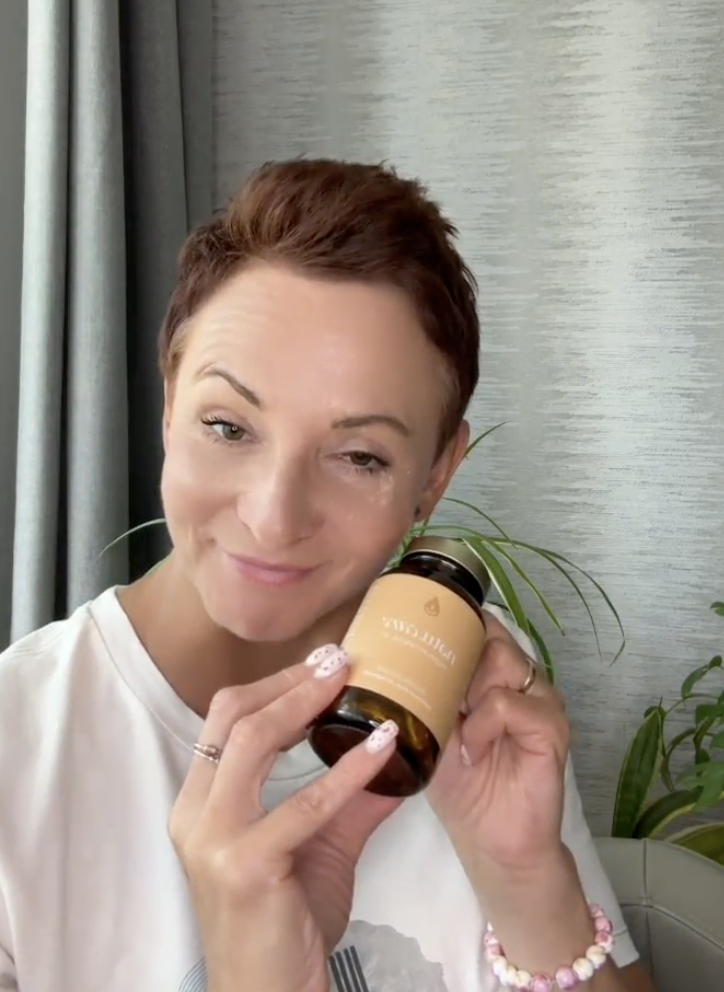
Produkt ma super skład, transparentną etykietę i co dla mnie jest ważne – małe kapsułki do połknięcia. Nie ma też nieprzyjemnego efektu odbijania rybą, który miałam spożywając inne produkty. Widzę znaczną poprawę odporności. Polecam!@Kasia P.
See also:
.What is acne?
.Acne is a group of chronic skin conditions characterised by skin lesions. These imperfections appear primarily on the face, but can also occur on the décolletage, arms and backand. Why is this definition so vague?
.Because with acne it is a bit like a bear. You can say "bear" for both a polar bear and a koala, even though these animals have in common basically only that they are mammals.
Because acne is not a mammal.
When we talk about acne, we usually mean acne vulgaris, but there are many more types of this disease. Each can have different causes and treatments.
What is the most common type of acne?
What are the types of acne?
.A common feature of all the skin conditions called acne is that they are chronic and can flare up. Therefore, it is worth implementing treatment as early as possible.
Important
Acne is a skin disease and, regardless of its type, should be treated by a dermatologist. Trying to fight it on your own can lead to a worsening of your skin condition. Later in this article you will find the section "Home remedies for acne" - however, consider the advice contained therein as a supplement to therapy, not as a stand-alone treatment. All home measures should also be consulted with your doctor.
Common acne (juvenile acne)
.Common acne (Latin acne vulgaris) also called juvenile acne (Latin acne juvenilis) is the eighth most common skin disease worldwide. Depending on the region, it affects between approximately 56% and up to 85% of teenagers, but can also occur in adultsand.
Common acne is a chronic skin condition involving clogging of hair follicle outlets and excessive sebum (sebum) production.
In the hair follicle, in addition to the hair, there are also sebaceous glands. When the skin is functioning properly, small amounts of sebum come to the surface of the skin through the mouth of the hair follicle. We need sebum in the right amounts - it has a protective function on the skin - it forms a hydrolipidic film, maintains the correct pH, protects the complexion from weather conditions and pathogenic microorganismsand.
.However, when produced in excess, it can lead to clogging of the follicle orifices. Their dysfunction can also be caused by bacteria or excessive keratinisation of the epidermis .
When the outlet of a hair follicle is clogged, sebum has no way of getting out, so it builds up inside. Bacteria begin to multiply in the lipid mixture and inflammation occurs. This is how pimples formand.
.In teenagers, the raging hormonal balance is also not insignificant. It can be assumed that adolescent acne is mainly dictated by this. There is not much we can do about such acne - we only need to educate young people about hygiene, disinfection and proper skin care, and do our best to minimise the number of lesions that develop and prevent atrophic scarring..
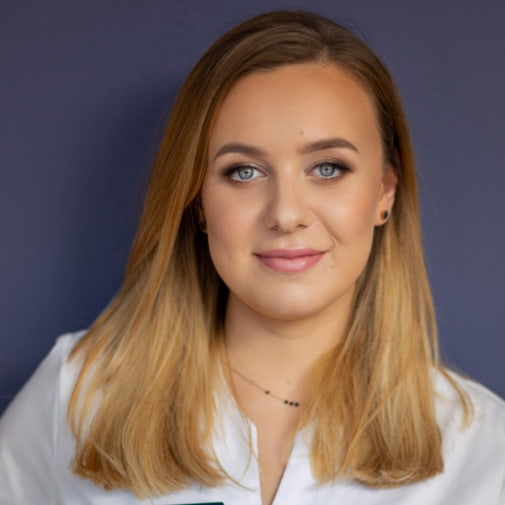 .
.
Katarzyna SrebrCosmetologist
Is every pimple acne?
No. We all have pimples on our face from time to time. They can appear as a result of a change in the cosmetics you use, when you overdo it with sweets or fatty foods, or before your period. And, of course, before an important event where you want to look sensational (always).
Common acne is a chronic ailment. If there are a lot of lesions on your skin and new ones keep appearing - go to a dermatologist. Only your doctor will be able to offer you a treatment with prescription products, if these prove necessary.
Several acne treatments are necessary.
Pustular acne
.Nodular acne can be a variation of acne vulgaris or other types of acne. It is characterised by skin lesions resembling small, red papules.
Unlike pimples, a purulent core (i.e. that white dot on top of the pimple) is not visible in papules. Very often, papular acne is also accompanied by a significant amount of blackheadsand.
Pustular and cystic acne
.Acne vulgaris can range in severity from mild to severe. The one with moderate to severe symptoms can take on an purulent form. This is characterised by purulent lesions on the skin and, in extreme cases, by pus-filled cysts. The cysts can resemble boils in appearance and can be up to several centimetres in sizeand.
Furulent and cystic lesions can leave scars on the skin. It is virtually impossible to remove them - you can only try to reduce their visibility with cosmetic treatments. Therefore, don't wait until the situation is out of your control - go to a dermatologist.
.Treatment of acne vulgaris
.For mild to moderate forms of acne vulgaris, topical treatment is most commonly used. Your dermatologist is most likely to recommend special acne lotions and ointments with which you can lubricate the affected areas.
For the topical treatment of acne vulgaris, the most common treatments are:
.- retinoids, .
- benzoyl peroxide, .
- azelaic acid, .
- salicylic acid, .
- antibiotics in the form of ointments and creams. .
In more severe forms of acne vulgaris, when topical treatment alone is not enough, your doctor may prescribe oral antibiotics. The most common are doxycycline and lymecycline. For extremely resistant acne, isotretinoin may also be implemented. This is a synthetic derivative of vitamin A that inhibits the activity and proliferation of sebaceous glandsand.
Isotretinoin should only be used in exceptional situations. It is a drug that affects the functioning of virtually every area of the body, especially in women/teenagers. It is compulsory for the patient to have a pregnancy test before a prescription is written, and to also include hormonal contraception once treatment has started..
 .
.
Katarzyna SrebrCosmetologist
Unfortunately, this drug can cause very serious fetal malformations or lead to miscarriage. Other inconveniences during treatment include pervasive dryness of all mucous membranes of the skin (mouth, eyelids, conjunctiva, nose, vagina, etc.), adds specialist cosmetology.
Care for acne vulgaris
.The cornerstone of skin care for acne vulgaris (and basically any other type of acne vulgaris) is thorough cleansing. This helps to prevent clogging of the follicle orifices and the formation of further inflammation.
Cleanse your face in two stages: first use a cosmetic that dissolves oil (both make-up and sebum), such as an oil or make-up remover. Then wash your face with a gel, lotion, foam or other product that rinses off with water. It will help to remove both the residue of impurities and the residue of the previous cosmetic.
.Only a face that has been cleansed in this way is it ready for further care and the application of topical acne medication.
Why is cleansing so important?
.Sebum is a mixture of lipids, or fat. During the day, dust, mites, bacteria and pollutants from the air stick to it. And if you're applying make-up, add some extra grease, colour-enhancing ingredients and sometimes silicones to it.
Sebum is a lipid, or lipid.
This layer is a great breeding ground for bacteria and ooze that, like glue, clogs the mouths of your hair follicles. You already know what this entails - more pimples, papules, blackheads and pimples.
This can be done every day.
How about a daily scrub, drying out your skin with alcohol and highly astringent cleansers you can buy at any drugstore? Well, probably every owner of oily and acne-prone skin has at one time or another had the urge to douse their face with spirits to finally get rid of that... (insert ugly word here - after all, it's acne vulgaris) ...sebum.
It's not.
No. It doesn't work like that. Contrary to everything you may be tempted to do (dry, dry!), use mild cleansers to remove make-up and wash your skin that won't disrupt your natural pH and won't irritate. Why?
The production of sebum is also a defence reaction of the skin. When you severely dry it, abrade it and irritate it, and therefore damage its protective layer, it will react in the only way it knows how: it will produce more sebum to defend itself against this.
The sebum production is the only way to defend itself.
Product description
The dietary supplement contains omega-3ᵀᴳ, or omega-3 acids in the form of trójglyceridesów. Scientific studies suggest that this form of fatty acidsós up to 2 times better absorbed than the estersós present in many dietary supplements on the market. This means that you are assured of their effectiveness and of supplying yourself with valuable omega acids.
Fatty acids omega-3 are derived from wild anchovy oil. It is a rich source of healthy fats that are essential for the health of the cardiovascular, immune and nervous systems, as well as the proper function of vision, joints muscles.
Scientific research suggests that wild anchovies are a good source of healthy fats.
Scientific research also suggests that an adequate intake of omega-3 fatty acidsós protects against and supports the treatment of depression and anxiety disorders. In addition, omega-3s influence the hydration and appearance of the skinóry and support healthy sleep.
.
The formula contains a total of 750 mg of EPA+DHA acidsós, which is three times higher than the recommended minimum of 250 mg for the Polish population. Omega-3 TG Premium has studies indicating that its TOTOX is 9, which is a very good result.
Supplementation of omega-3 fatty acidsóis recommended for anyone who does not eat 1–2 portions (approximately 300 g) of oily fish per week. Children during growth, seniors, physically active people, vegans and vegetarians, as well as patients undergoing cardiovascular treatment and prevention of heart disease also have an increased need.
Pros and cons
The dietary supplement contains omega-3ᵀᴳ, or omega-3 acids in the form of trójglyceridesów. Scientific studies suggest that this form of fatty acidsós up to 2 times better absorbed than the estersós present in many dietary supplements on the market. This means that you are assured of their effectiveness and of supplying yourself with valuable omega acids.
Fatty acids omega-3 are derived from wild anchovy oil. It is a rich source of healthy fats that are essential for the health of the cardiovascular, immune and nervous systems, as well as the proper function of vision, joints muscles.
Scientific research suggests that wild anchovies are a good source of healthy fats.
Scientific research also suggests that an adequate intake of omega-3 fatty acidsós protects against and supports the treatment of depression and anxiety disorders. In addition, omega-3s influence the hydration and appearance of the skinóry and support healthy sleep.
.
The formula contains a total of 750 mg of EPA+DHA acidsós, which is three times higher than the recommended minimum of 250 mg for the Polish population. Omega-3 TG Premium has studies indicating that its TOTOX is 9, which is a very good result.
Supplementation of omega-3 fatty acidsóis recommended for anyone who does not eat 1–2 portions (approximately 300 g) of oily fish per week. Children during growth, seniors, physically active people, vegans and vegetarians, as well as patients undergoing cardiovascular treatment and prevention of heart disease also have an increased need.
Additional information
The dietary supplement contains omega-3ᵀᴳ, or omega-3 acids in the form of trójglyceridesów. Scientific studies suggest that this form of fatty acidsós up to 2 times better absorbed than the estersós present in many dietary supplements on the market. This means that you are assured of their effectiveness and of supplying yourself with valuable omega acids.
Fatty acids omega-3 are derived from wild anchovy oil. It is a rich source of healthy fats that are essential for the health of the cardiovascular, immune and nervous systems, as well as the proper function of vision, joints muscles.
Scientific research suggests that wild anchovies are a good source of healthy fats.
Scientific research also suggests that an adequate intake of omega-3 fatty acidsós protects against and supports the treatment of depression and anxiety disorders. In addition, omega-3s influence the hydration and appearance of the skinóry and support healthy sleep.
.
The formula contains a total of 750 mg of EPA+DHA acidsós, which is three times higher than the recommended minimum of 250 mg for the Polish population. Omega-3 TG Premium has studies indicating that its TOTOX is 9, which is a very good result.
Supplementation of omega-3 fatty acidsóis recommended for anyone who does not eat 1–2 portions (approximately 300 g) of oily fish per week. Children during growth, seniors, physically active people, vegans and vegetarians, as well as patients undergoing cardiovascular treatment and prevention of heart disease also have an increased need.
Expert opinion
The dietary supplement contains omega-3ᵀᴳ, or omega-3 acids in the form of trójglyceridesów. Scientific studies suggest that this form of fatty acidsós up to 2 times better absorbed than the estersós present in many dietary supplements on the market. This means that you are assured of their effectiveness and of supplying yourself with valuable omega acids.
Fatty acids omega-3 are derived from wild anchovy oil. It is a rich source of healthy fats that are essential for the health of the cardiovascular, immune and nervous systems, as well as the proper function of vision, joints muscles.
Scientific research suggests that wild anchovies are a good source of healthy fats.
Scientific research also suggests that an adequate intake of omega-3 fatty acidsós protects against and supports the treatment of depression and anxiety disorders. In addition, omega-3s influence the hydration and appearance of the skinóry and support healthy sleep.
.
The formula contains a total of 750 mg of EPA+DHA acidsós, which is three times higher than the recommended minimum of 250 mg for the Polish population. Omega-3 TG Premium has studies indicating that its TOTOX is 9, which is a very good result.
Supplementation of omega-3 fatty acidsóis recommended for anyone who does not eat 1–2 portions (approximately 300 g) of oily fish per week. Children during growth, seniors, physically active people, vegans and vegetarians, as well as patients undergoing cardiovascular treatment and prevention of heart disease also have an increased need.
MISSHA All Around Safe Block Aqua Sun
Product description
Soothing sunscreen provides a high level of protection against UVA and UVB rays. Its light, gel-like texture and moisturising properties make it an ideal option under makeup.
The cosmetic gives a cooling sensation, whichós very pleasant on hot days – especially when sunbathing, on a sunny beach.
Pros and cons
Soothing sunscreen provides a high level of protection against UVA and UVB rays. Its light, gel-like texture and moisturising properties make it an ideal option under makeup.
The cosmetic gives a cooling sensation, whichós very pleasant on hot days – especially when sunbathing, on a sunny beach.
Additional information
Soothing sunscreen provides a high level of protection against UVA and UVB rays. Its light, gel-like texture and moisturising properties make it an ideal option under makeup.
The cosmetic gives a cooling sensation, whichós very pleasant on hot days – especially when sunbathing, on a sunny beach.
User review
Soothing sunscreen provides a high level of protection against UVA and UVB rays. Its light, gel-like texture and moisturising properties make it an ideal option under makeup.
The cosmetic gives a cooling sensation, whichós very pleasant on hot days – especially when sunbathing, on a sunny beach.
Veoli Botanica HAVE A NICE FACE, day cream
Product description
Solid, deeply moisturising day cream. It has protective and soothing properties. It supports the skinós natural protective barrier. Your skin will be hydrated and relaxed.
.Thanks to its natural antioxidantós content, it prevents the formation of wrinkles and reduces oxidative stress on the skinóry.
The cream has a pleasant, fairly rich texture. It absorbs quickly and does not leave a visible layer on the skinóy. It is perfect as a make-up base.
The cream has a pleasant, rather rich texture.
Pros and cons
Solid, deeply moisturising day cream. It has protective and soothing properties. It supports the skinós natural protective barrier. Your skin will be hydrated and relaxed.
.Thanks to its natural antioxidantós content, it prevents the formation of wrinkles and reduces oxidative stress on the skinóry.
The cream has a pleasant, fairly rich texture. It absorbs quickly and does not leave a visible layer on the skinóy. It is perfect as a make-up base.
The cream has a pleasant, rather rich texture.
Additional information
Solid, deeply moisturising day cream. It has protective and soothing properties. It supports the skinós natural protective barrier. Your skin will be hydrated and relaxed.
.Thanks to its natural antioxidantós content, it prevents the formation of wrinkles and reduces oxidative stress on the skinóry.
The cream has a pleasant, fairly rich texture. It absorbs quickly and does not leave a visible layer on the skinóy. It is perfect as a make-up base.
The cream has a pleasant, rather rich texture.
User review
Solid, deeply moisturising day cream. It has protective and soothing properties. It supports the skinós natural protective barrier. Your skin will be hydrated and relaxed.
.Thanks to its natural antioxidantós content, it prevents the formation of wrinkles and reduces oxidative stress on the skinóry.
The cream has a pleasant, fairly rich texture. It absorbs quickly and does not leave a visible layer on the skinóy. It is perfect as a make-up base.
The cream has a pleasant, rather rich texture.
So the invasive and potent cosmetics that from the shop shelves shout about acne will probably help you. But only for a while. In the long term, they will harm you, leading to even more sebaceous gland dysregulation.
See also:
.Rosacea
.Rosacea (Latin) acne rosacea), is a chronic skin condition affecting mainly the face. It is increasingly being classified as an autoimmune disease. It is manifested by recurrent erythema, often accompanied by papules, pustules and so-called 'spider veins' - dilated blood vessels. Most commonly, erythema appears on the cheeks, nose, chin and foreheadand.
According to various estimates, rosacea can affect between 2% and up to 22% of the population worldwide. In Europe, depending on the source, the prevalence of the condition is between 10 and 20%. People with fair skin (types I and II), light eyes and hair are more likely to suffer from this conditionand.
Rasal acne manifests as red patches or severe erythema. The redness may also be accompanied by dilated capillaries, forming characteristic purple 'spider veins', or red papules and pustules. In an advanced stage, the skin may become thickened and patchyand.
The causes of rosacea are not yet fully understood. Researchers most commonly point toand:
- genetic predisposition, .
- immune system dysfunction, .
- vascular and neurovascular hypersensitivity, .
- presence of microorganisms, .
- disorders of the thyroid gland, .
- environmental conditions, such as prolonged sun exposure or prolonged stress, .
- chronic inflammation in the body, occurring, for example, with diseases such as SIBO syndrome.
Treatment of rosacea
.Rosaceous acne is a chronic skin condition whose treatment requires a specialised approach. When you visit a dermatologist, you will receive a diagnosis of the type of acne you are struggling with, as well as a possible prescription for the necessary medication. Remember that skin with rosacea requires regular check-ups.
Your doctor will suggest specialist creams and ointments for rosacea, which often contain metronidazole - an anti-inflammatory and antibacterial substance that helps reduce rednessand.
.Another popular ingredient is azelaic acid, which is particularly effective in treating the papulopustular form of rosacea .
.Antibiotics for rosacea are also available in the form of topical ointments, creams and gels. If there is purulent inflammation on the skin, the dermatologist may prescribe such drugs - erythromycin is the most commonly used.
The following are available.
In certain situations it may be necessary to take antibiotics or other medications orally. These preparations should be used as prescribed by the dermatologist. The most commonly used substances in these medications are antibiotics from the tetracycline group, such as doxycyclineand.
.Unfortunately, there are no magic pills that will instantly eradicate the problem. Fighting rosacea means first and foremost rethinking and adjusting your daily skincare routine and the type of cosmetics you use. Changes in diet and daily habits are also likely to be necessary.
When managed well, rosacea can remain in remission for many months with no symptoms. In addition to skin care and changes in lifestyle habits, visits to cosmetic surgeries can help, which will significantly reduce the frequency of recurrence of lesions..
 .
.
Katarzyna SrebrCosmetologist
Treatments for people with rosacea focus on calming the skin, strengthening blood vessel walls, eliminating erythema and gently thickening the epidermis, explains cosmetologist.
Care for rosacea
.Care for skin struggling with rosacea requires special attention, as it is an extremely sensitive and often vascular skin. It is best to consult your skincare plan with a dermatologist and cosmetologist to tailor it to your individual needs.
Focusing on soothing erythema and calming the skin is key in skincare. Your dermatologist will be able to advise you on which products or active ingredients you should look for and which you should avoid.
Consider the following.
Although some principles are universal. Below are a few of them:
- Use pH-balanced cleansing products that won't dry out your skin.
- All the time.
- Always use a good quality sunscreen. During the autumn/winter season, SPF 30 is the minimum, while in summer choose SPF 50. .
- Regularly moisturise your skin with creams. .
Cosmetics for rosacea skin care should be free of irritants such as preservatives and drying alcohols. Instead, it is good for them to contain ingredients that soothe irritation and strengthen blood vessels. It is also a good idea to look for products that nourish the skin and strengthen its natural hydrolipid barrier.
{ product:35aGleHihotm7h5NvBxPWf }}
In addition to proper skin care, try to avoid factors that exacerbate rosacea symptoms. The skin condition can worsen fromand:
- exposure to rapid changes in temperature (avoid saunas and walruses and even heavily air-conditioned rooms, do not wash your face with hot water), .
- contact with chlorinated water (e.g. at the swimming pool), .
- exposure to the sun without SPF protection, .
- severe or prolonged stress, .
- taking certain medications, .
- consumption of alcohol,
- excessive or prolonged stress,
- intoxication with alcohol, and
- spicy and hard-to-digest foods (read more about diet for acne below). .
According to research, the skin inflammation that accompanies rosacea can help you control omega-3 acids. So it's worth including oily fish in your diet, which is the best source of them. You may also want to consider supplementing with themand.
.Hormonal acne
.The hormones responsible for the occurrence of acne are androgens. They contribute to the development of acne vulgaris, but in its case are most often associated with changes in hormonal balance at pubertyand.
For adults, hormonal acne, i.e. that caused by androgens, can be the result of other conditions related to hormone disorders in the body .
.Interestingly, according to the 2019 clinical guide, most skin lesions in adult women are located on the chin and along the jawbone. However, this does not exclude the possibility of pimples on other parts of the face and even the shoulders and backand.
Treatment of hormonal acne
.In addition to the standard treatments for acne itself (described for acne vulgaris), it is important to note that hormonal acne will be a secondary ailment. This means that it is, so to speak, a symptom of another condition that causes changes in hormonal management (e.g. with polycystic ovary syndrome - PCOS)and.
There is also increasing talk of acne arising from the gut-brain-skin axis. Any disturbance of the gut will have consequences for the whole body (especially the immune system), but also for the skin. The same applies to the psyche, which also impinges on every zone of body function..
 .
.
Katarzyna SrebrCosmetologist
If we have a person in front of us who reacts to any stress with an intestinal revolution, it is very likely that inflammation also appears on their skin following this stress. In that case, instead of aggressive measures, a change in diet, learning to cope with stress, and good quality probiotic therapy prove helpful, explains expert.
To permanently control acne lesions, you need to eliminate the cause of the hormonal disorder, or at least get treatment to control its secretion. If your acne may have hormonal causes, see an endocrinologist. Your doctor will be able to order additional tests and determine the best treatment for you.
Hormonal acne care
.Correct skin care for hormonal acne can be a challenge. As the skin ages, it loses its protective properties, making it more sensitive and prone to water loss.
Even skin with hormonal acne can be affected.
Even acne-prone skin needs hydration. Choose light, fragrance-free, non-comedogenic products that do not clog pores. Apply moisturising cream immediately after washing your face, while your skin is still damp. It is worth ensuring that the cosmetic helps to rebuild the skin's natural protective barrier. Ceramides or D-panthenol, for example, will provide such an effect.
.If you feel that a moisturising cream cosmetic is too heavy for your skin, opt for a serum. It's a lighter formula that absorbs much faster and is more concentrated.
Inverted acne
.Acne inversa (Latin) Hidradenitis suppurativa) is a chronic, recurrent and inflammatory skin condition accompanied by red nodules, abscesses and fistulas. These lesions usually appear in the areas with the most sweat glands - the armpits and groin, or where the skin likes to fold and rub against itself - under the breasts, buttocks, abdomenand.
Inverted acne is not limited to the skin alone, but is systemic in nature. This means that the inflammation caused by it can also affect the functioning of internal organsand.
Affected individuals experience considerable discomfort: the skin lesions are painful and often accompanied by itching. In the advanced stage, when fistulas develop on the skin, an unpleasant odour of pus may be emittedand.
.Treatment of inverted acne
.Any skin lesion that is not a typical pimple, blackhead or piglet should arouse your vigilance and result in a visit to the doctor. The same is true for nodules that form in the first phase of acne inversa.
This disease can threaten your health and life, and therefore absolutely requires specialised dermatological treatment and in some cases even surgeryand.
.The mainstay of treatment for acne inversa is pharmacotherapy. In the early stages of the disease and with mild lesions, clindamycin preparations are used. More severe lesions may require antibiotic therapy or the use of biologic treatment in the form of injections, which also has good resultsand.
.Interesting fact
.Botulinum toxin (or botox) can also be helpful in the treatment of inverted acne. It is administered subcutaneously, in the areas where the lesions occur.
In some cases, surgical intervention is required. This ranges from a minimally invasive procedure called deroofing, which involves the removal of a section of tissue over the fistula, to the removal of the entire diseased area during standard surgeryand.
.
Care for inverted acne
.Cleanse the affected areas daily with an antiseptic. This will prevent bacteria from multiplying. Also avoid anything that could irritate the skin: use unscented, mild laundry detergents, cosmetics with simple, short formulations and unscented antiperspirantsand.
When it comes to hair removal, for those suffering from acne inversion, specialists recommend the laser one. You can also opt for waxing, but only if the condition is inactiveand.
.Wearing loose, airy clothing made from natural materials such as cotton and linen is also important. People suffering from the condition are not recommended to take part in sports that may lead to excessive sweating. Alternatives include, for example, swimming, slow relaxing yoga or walkingand.
Fungal acne
.Fungal acne (Latin Fungal acne) resembles acne vulgaris in its symptoms and is therefore very difficult to diagnose. It is most often accompanied by pustular and papular skin lesions. The cause of fungal acne is (as you may have guessed) fungi, specifically those of the genus Malassezia. They cause infection and inflammation of the hair follicles, leading to clogged follicle outlets and pimplesand.
Rather peculiar to this infestation straight out of The Last of Us is the presence of skin lesions also on the torso and the absence of visible blackheads, which are quite typical of acne vulgaris .
.People with weakened immune systems are particularly susceptible to fungal acne. Fungal penetration into hair follicles is also facilitated by irritated or damaged skin . This is not only about wounds and abrasions, but also, for example, irritation caused by wearing tight clothing or those caused by shaving.
Treatment of fungal acne
.It can be difficult to diagnose fungal acne from the symptoms alone, so it is worth seeing a dermatologist who can carry out additional skin tests to check for the presence of fungi.
When fungal acne can be diagnosed, the doctor will prescribe antifungal medications, either topical or systemic. According to research, the best results are obtained with oral agents. The most effective fungicides used to treat fungal acne are ketoconazole and itraconazoleand.
.Care for fungal acne
.Fungal acne likes heat and moisture. Don't help them.Wipe your face with a disposable paper towel - the cloth one is damp for a long time, and because it hangs around in a warm bathroom, it's a great place for all sorts of pathogenic microorganisms to thrive.
Fungal acne care is also important.
In your skincare, also avoid oil-based cosmetics and those that absorb poorly and leave a film on the skin.
Refrain from shaving the affected areas, and if this is not possible, do so very carefully. If the lesions are on the torso, wear loose and airy clothing that does not cling to the skinand.
The following is an example.
Diet for acne
.Correct diet is crucial especially in the treatment of rosacea. clinical nutritionist Julia Skrajda explains:
"The mainstay of a rosacea diet is its anti-inflammatory effect and keeping glycaemia levels stable. Lots of vegetables, nuts and lean dairy are foods that help us lower the glycaemic load of our meals. Let's also try to control the amount of fruit we consume for this reason and combine it precisely with vegetables, dairy products and nuts, which lowers the glucose after their consumption.
Sweets are not recommended because of the hydrogenated oils and large amounts of sugar. But if you do eat them, try to do so after a dry meal (again, to prevent a large glucose spike).
Sugar is not recommended.
Dairy should be chosen low-fat - lean cottage cheese, country cheese and light cheeses. Sometimes it is worth considering lactose-free dairy, as it can increase the risk of acne flare-ups, but it is important to remember that lactose-free dairy has a higher glycaemic index, so it needs to be incorporated correctly into the diet."
Sugar and fat are also important.
Sugar and fatty, highly processed products can also promote the formation of pimples with other types of acne, and even when we do not suffer from acne. Whoever hasn't been pimped out at least once after a festive binge on cheesecake, apple pie and chocolate, let them cast the first stone.
If you have acne or pimple tendencies, keep sweets to a minimum. Also avoid fast food and hard to digest foods. Instead, opt for foods rich in vitamins and minerals, which will strengthen your skin from the inside out.
Treatments for acne
.There are many effective cosmetic treatments that can help you fight this condition. Before reading about any of them, be sure to consult your dermatologist about your plans.
Microdermabrasion for acne
.Microdermabrasion is a non-invasive procedure that involves mechanical exfoliation of the epidermis. Thanks to this treatment:
- .
- remove dead skin cells that can clog pores, .
- you improve circulation, which speeds up skin regeneration, .
- you reduce the visibility of acne scars, .
Under no circumstances should microdermabrasion be performed if you have active acne! If there is any inflammation on the skin, this treatment should be abandoned, or if it is isolated and small - avoided. It works well for people with resistant, thick, oily skin, possibly with open blackheads that do not give inflammation..
 .
.
Katarzyna SrebrCosmetologist
Chemical peels for acne
.Chemical peeling is a treatment that involves applying a special substance to the skin to dissolve dead skin cells. The benefits of this treatment are:
.- .
- reduction of blackheads, .
- smoothing of the skin, .
- deep cleansing, .
Note
Acid peels may not be recommended in certain types of acne (e.g. rosacea) or with severely damaged skin. Always consult a specialist for acid peels and do not perform them at home on your own!
Phototherapy for acne
.Phototherapy is a treatment that uses a special spectrum of LED light to combat acne. With this treatment:
- .
- you reduce inflammation, .
- you inhibit the growth of bacteria and fungi responsible for acne formation, .
- you accelerate skin healing, .
Laser for acne
.Laser therapy is an innovative treatment that uses a concentrated laser beam to fight acne. The benefits of this treatment are:
.- .
- reduction of blemishes, .
- reduction in the visibility of acne scars, .
- improving the overall appearance of the skin, .
Remember that each treatment should be tailored to the individual needs of your skin. Therefore, it is always a good idea to consult an experienced cosmetologist or dermatologist before deciding on a particular treatment.
Home remedies for acne
.The internet is teeming with homemade pastes, masks and specifics that you can make yourself and use "for acne". The problem is, however, that food products may cause allergies on already inflamed skin, and if used in inappropriate concentrations, further irritate the skin.
Acne is an acne problem.
Acne is a condition that should be treated by a dermatologist. And even if homemade masks help with simple pimples, they usually won't do the job with a chronic skin condition. They may even worsen the skin condition, for example by drying it out excessively.
.That is why I will deliberately not post such advice here. I will, however, sell you a few simple tricks that are safe and will definitely help you in the fight against acne:
.- .
- Never go to bed wearing make-up. Facial cleansing with acne-prone skin is the basics. Coloured cosmetics combined with sebum is the perfect breeding ground for bacteria and something that will effectively clog your hair follicle outlets. Skin lesions are a given. .
- After washing wipe your face in a disposable paper towel. This is the most hygienic solution. Lots of bacteria accumulate on a regular towel because the material is often damp. The warm and steamy environment of the bathroom is also conducive to this. .
- Change your pillowcase frequently. Many people forget to do this, yet the skin of the face comes into contact with this part of the bedding throughout the night. Bacteria and dust mites also build up in the fabric of the pillowcase. You don't want them on your face in excess. .
- Clean the brushes, blenders and sponges you use for make-up after every use. The reasons are the same as above - bacteria thrive in leftover fluid and powder. By using dirty accessories, you are putting them on your face along with your make-up. .
- Don't touch your face. Sounds weird, I know. It can also be tricky, especially if you tend to support your cheek or chin on your hand. However, your hands touch a huge amount of things during the day and harbour microbes that can aggravate facial skin. Think if you happen to get pimples in greater numbers where you usually touch your face? .
- Take a look at your foundation. I know that when your skin is teeming with red pimples, you want to cover them up as best you can. But most long-lasting and opaque foundations contain silicones in them, which create a tight mask over your complexion. And guess what - well that's right, they clog pores. And this contributes to the formation of new pimples. And while you may feel better about your appearance for a while, in the long run you're just harming yourself. .
- Give your skin a breather. Following on from the point above, try to find at least one day a week where you don't apply make-up. And if acne is also present on other parts of your body, try to choose airy clothes made of natural materials.
And finally, some more advice from a skincare expert:
.Do not remove blackhead lesions on your own. The exception is inflammation with a visible white spot. It is better to remove it gently using disposable accessories and remember not to let any blood appear - then you increase the risk of scarring in that area. We then disinfect the area and apply an anti-inflammatory product to facilitate healing..
 .
.
Katarzyna SrebrCosmetologist

Sprawdź, za co pokochały go tysiące klientek Natu.Care Premium Omega-3ᵀᴳ -15% z kodem BLOG15
Natu.Care Omega-3ᵀᴳ Premium
Natu.Care Omega-3ᵀᴳ Premium dla zdrowia serca, mózgu i odporności. Najlepsza przyswajalność. Optymalna dawka 750 mg. Przebadana przez niezależne laboratorium.
Zobacz więcej
Produkt ma super skład, transparentną etykietę i co dla mnie jest ważne – małe kapsułki do połknięcia. Nie ma też nieprzyjemnego efektu odbijania rybą, który miałam spożywając inne produkty. Widzę znaczną poprawę odporności. Polecam!@Kasia P.
See also:
.Summary
.- Acne is a chronic condition accompanied by inflammatory skin lesions.
- There are many types of acne.
- There are many types of acne: from common to inverted acne. Each form requires a different treatment, so a visit to a dermatologist is essential. .
- Treatments for acne include topical or oral preparations. Cosmetic treatments may also help, but it is always worth consulting your doctor.
- Basic acne care is based on the following principles
- The basis of acne skin care is two-stage cleansing with mildly acting cosmetics. .
- The condition of acne-prone skin is also significantly influenced by diet. With stubborn forms of acne, it is worth consulting your diet with a nutritionist. .
FAQ
.What to use for acne?
.Before deciding on your next product, consult a dermatologist. A specialist will best select an acne treatment to suit your skin's needs and the type of acne you are dealing with. You can choose between topical preparations (usually ointments or liquids), but also medications taken orally.
.Also remember to take proper face care: use moisturising creams and cleanse your skin thoroughly twice a day.
How much do hormone tests for acne cost?
.A complete set of hormonal tests that can be used to diagnose the causes and treatment of acne is a cost that ranges from a hundred and several to as much as £400. It all depends on how extensive the examination is.
The tests can also be performed by the National Health Fund. In this case, you should be referred by a dermatologist. You can only get a referral for an NFZ examination from a doctor at a clinic that has a contract with the NFZ. Most private practices will not be able to issue a referral for free examinations.
.How to cure acne?
.Acne is best treated by a dermatologist. By following the recommendations of a specialist, you have the best chance of winning against this unpleasant ailment. For rosacea and some other refractory forms of acne, it's also a good idea to seek the help of a nutritionist, and establish your care routine with a good cosmetologist.
Remember, too, that for acne-prone skin, the "less is more" rule generally works. Don't overdo it cosmetics -both colour and skincare. They can overload the skin, clog it and stimulate sebum production.
How to treat rosacea?
.Treating rosacea is a process that involves dermatological treatment (using products chosen by your doctor), gentle skin care directed at calming the skin and soothing erythema, and changing your habits.
Avoiding spicy and greasy foods, irritants (e.g. chlorinated water), sudden temperature changes (e.g. saunas) and using sunscreen are the cornerstones in the fight against rosacea.
Which vitamins are worth taking for acne
.Vitamin A, helps to regulate sebum production, which is key in the fight against acne. Examples of sources include carrots, spinach and yams. Include vitamin E in your diet, it is a powerful antioxidant that helps skin regeneration. You can find it in almonds, spinach or olive oil.
Vitamin D improves immune system function, which can help reduce skin inflammation. The best source of it is the sun, but you can also find it in oily fish. Remember vitamin C, which supports the production of collagen, crucial for skin health. You can find it in citrus, kiwi, or peppers.
What food causes acne?
.Avoid foods with a high glycaemic index, such as white bread, biscuits and fast food. These foods cause blood sugar levels to spike, which can lead to acne. Instead, choose foods with a low glycaemic index, such as whole-grain bread, fruit and vegetables.
Decrease your intake of milk and dairy products. Studies have shown that they can contribute to acne, possibly due to the lactose present in milk. Eat more fish and nuts, which are rich in healthy omega-3 fats. These help reduce the skin inflammation that accompanies acne.
What does acne look like?
.The appearance of acne lesions depends on the type of acne we are dealing with. It is most commonly accompanied by blackheads, pimples and papules. Blackheads are small, usually black or white spots on the skin that are the result of blocked pores. Pimples and papules are larger, painful pimples that can be red and filled with pus.
.For rosacea, there is erythema and dilated blood vessels, while acne inversa are reddish nodule-like lesions that may be accompanied by fistulas in later stages of the disease. Acne (with the exception of acne inversa) most commonly appears on the face, but can also occur on the back, chest and arms.
Sources
.See all
.Acne clinical guideline. (n.d.). Retrieved 5 October 2023, from https://www.aad.org/member/clinical-quality/guidelines/acne
Alanazi, M. S., Hammad, S. M., & Mohamed, A. E. (2018). Prevalence and psychological impact of Acne vulgaris among female secondary school students in Arar city, Saudi Arabia, in 2018. Electronic Physician, 10(8), 7224-7229. https://doi.org/10.19082/7224
Bagatin, E., de Freitas, T. H. P., Machado, M. C. R., Ribeiro, B. M., Nunes, S., & da Rocha, M. A. D. (2019). Adult female acne: A guide to clinical practice. Anais Brasileiros de Dermatologia, 94(1), 62-75. https://doi.org/10.1590/abd1806-4841.20198203
Branisteanu, D. E., Toader, M. P., Porumb, E. A., Serban, I. L., Pinzariu, A. C., Branisteanu, C. I., Vicovan, A., Dimitriu, A., Fartusnic, I.-A., Boda, D., Branisteanu, D. C., Brihan, I., & Nicolescu, A. C. (2022). Adult female acne: Clinical and therapeutic particularities (Review). Experimental and Therapeutic Medicine, 23(2), 1-7. https://doi.org/10.3892/etm.2021.11074
.Carmina, E., Dreno, B., Lucky, W. A., Agak, W. G., Dokras, A., Kim, J. J., Lobo, R. A., Ramezani Tehrani, F., & Dumesic, D. (2022). Female Adult Acne and Androgen Excess: A Report From the Multidisciplinary Androgen Excess and PCOS Committee. Journal of the Endocrine Society, 6(3), bvac003. https://doi.org/10.1210/jendso/bvac003
Eichenfield, D. Z., Sprague, J., & Eichenfield, L. F. (2021). Management of Acne Vulgaris: A Review. JAMA, 326(20), 2055-2067. https://doi.org/10.1001/jama.2021.17633
Farshchian, M., & Daveluy, S. (2023). Rosacea. In StatPearls. StatPearls Publishing. http://www.ncbi.nlm.nih.gov/books/NBK557574/
.Franklin, H. (2021, October 11). Dermatology: How to manage acne vulgaris. Drugs in Context. https://www.drugsincontext.com/dermatology-how-to-manage-acne-vulgaris/
Fungal acne: Malassezia Folliculitis, Pityrosporum Folliculitis. (n.d.). Cleveland Clinic. Retrieved October 5, 2023, from https://my.clevelandclinic.org/health/diseases/24341-fungal-acne
Haider, A., & Shaw, J. C. (2004). Treatment of Acne Vulgaris. JAMA, 292(6), 726-735. https://doi.org/10.1001/jama.292.6.726
Heng, A. H. S., & Chew, F. T. (2020). Systematic review of the epidemiology of acne vulgaris. Scientific Reports, 10(1), Article 1. https://doi.org/10.1038/s41598-020-62715-3
Kraft, J., & Freiman, A. (2011). Management of acne. CMAJ, 183(7), E430-E435. https://doi.org/10.1503/cmaj.090374
Malgotra, V., & Singh, H. (n.d.). Malassezia (Pityrosporum) Folliculitis Masquerading As Recalcitrant Acne. Cureus, 13(2), e13534. https://doi.org/10.7759/cureus.13534
Nowicka, D., Chilicka, K., Dzieńdziora-Urbińska, I., & Szyguła, R. (2023). Skincare in Rosacea from the Cosmetologist's Perspective: A Narrative Review. Journal of Clinical Medicine, 12(1), Article 1. https://doi.org/10.3390/jcm12010115
Ogé, L. K., Broussard, A., & Marshall, M. D. (2019). Acne Vulgaris: Diagnosis and Treatment. American Family Physician, 100(8), 475-484. https://pubmed.ncbi.nlm.nih.gov/31613567/
Oliveira, C. M. M. de, Almeida, L. M. C., Bonamigo, R. R., Lima, C. W. G. de, & Bagatin, E. (2020). Consensus on the therapeutic management of rosacea - Brazilian Society of Dermatology. Anais Brasileiros de Dermatologia, 95, 53-69. https://doi.org/10.1016/j.abd.2020.08.001
Rubenstein, R. M., & Malerich, S. A. (2014). Malassezia (Pityrosporum) Folliculitis. The Journal of Clinical and Aesthetic Dermatology, 7(3), 37-41.
.Sharma, A., Kroumpouzos, G., Kassir, M., Galadari, H., Goren, A., Grabbe, S., & Goldust, M. (2022). Rosacea management: A comprehensive review. Journal of Cosmetic Dermatology, 21(5), 1895-1904. https://doi.org/10.1111/jocd.14816
.Shen, S., Yan, G., Cao, Y., Zeng, Q., Zhao, J., Wang, X., & Wang, P. (2023). Dietary supplementation of n-3 PUFAs ameliorates LL37-induced rosacea-like skin inflammation via inhibition of TLR2/MyD88/NF-κB pathway. Biomedicine & Pharmacotherapy, 157, 114091. https://doi.org/10.1016/j.biopha.2022.114091
Tobiasz, A., Nowicka, D., & Szepietowski, J. C. (2022). Acne Vulgaris-Novel Treatment Options and Factors Affecting Therapy Adherence: A Narrative Review. Journal of Clinical Medicine, 11(24), Article 24. https://doi.org/10.3390/jcm11247535
Prof. dr hab. n. med. Barańska-Rybak, W., Lewandowski, M., Świerczewska, Z., Dobosz, M., Sokolewicz, E., Kołkowski, K., Bojahr, K., Zysk, W., Kaźmierczak, P., Badzar, M., Gyllenstein, J., Rogowska, M., Brzezińska, N, Łukasiewicz, M. ed. Prof. Dr. Barańska-Rybak, W., Lewandowski M., Świerczewska, Z. Clinic and Department of Dermatology, Venereology and Allergology, Medical University of Gdańsk. Inverted Acne. A guide for patients. https://gumed.edu.pl/attachment/attachment/79923/Tradzik_odwrocony_poradnik_dla_pacjentow.pdf
Editorials
Meet the team

Cosmetologist
Cosmetologist and linergist with extensive experience working with clients with a wide range of skin health needs and concerns.

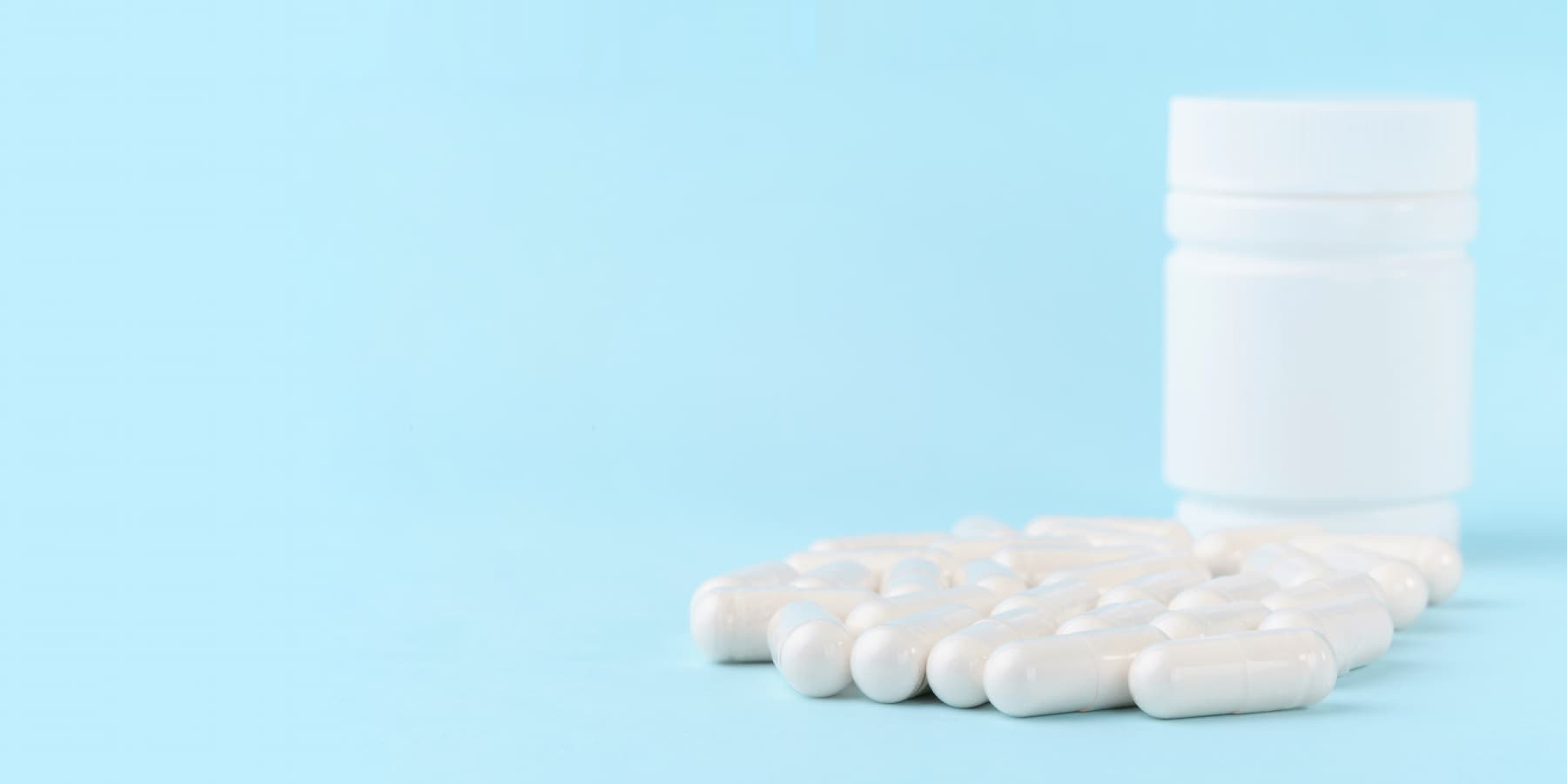
Chondroitin helps the joints and other elements of the body.
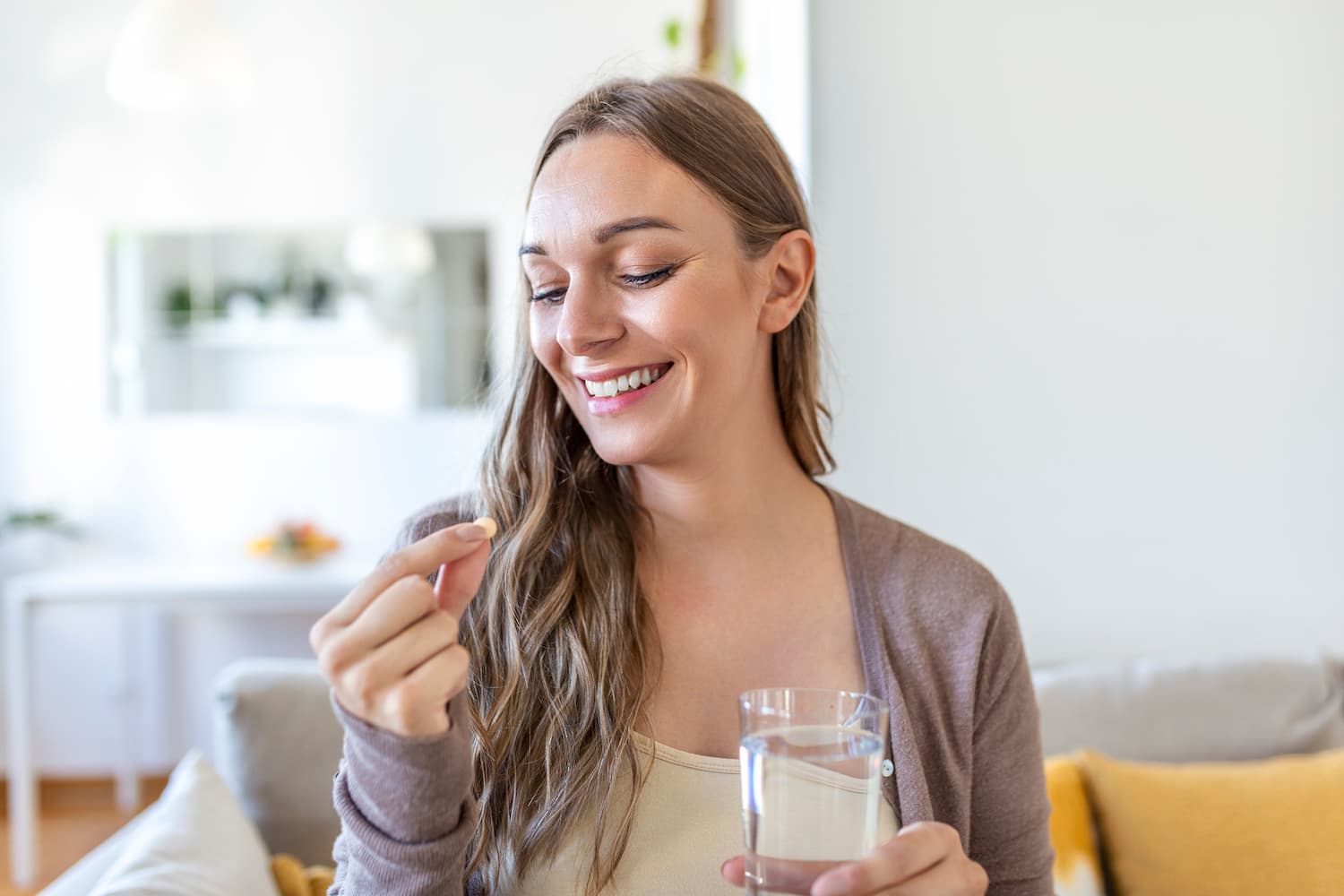
Glutathione is one of the most potent antioxidants for supporting the body's health. Find out how it works and where to get it from.
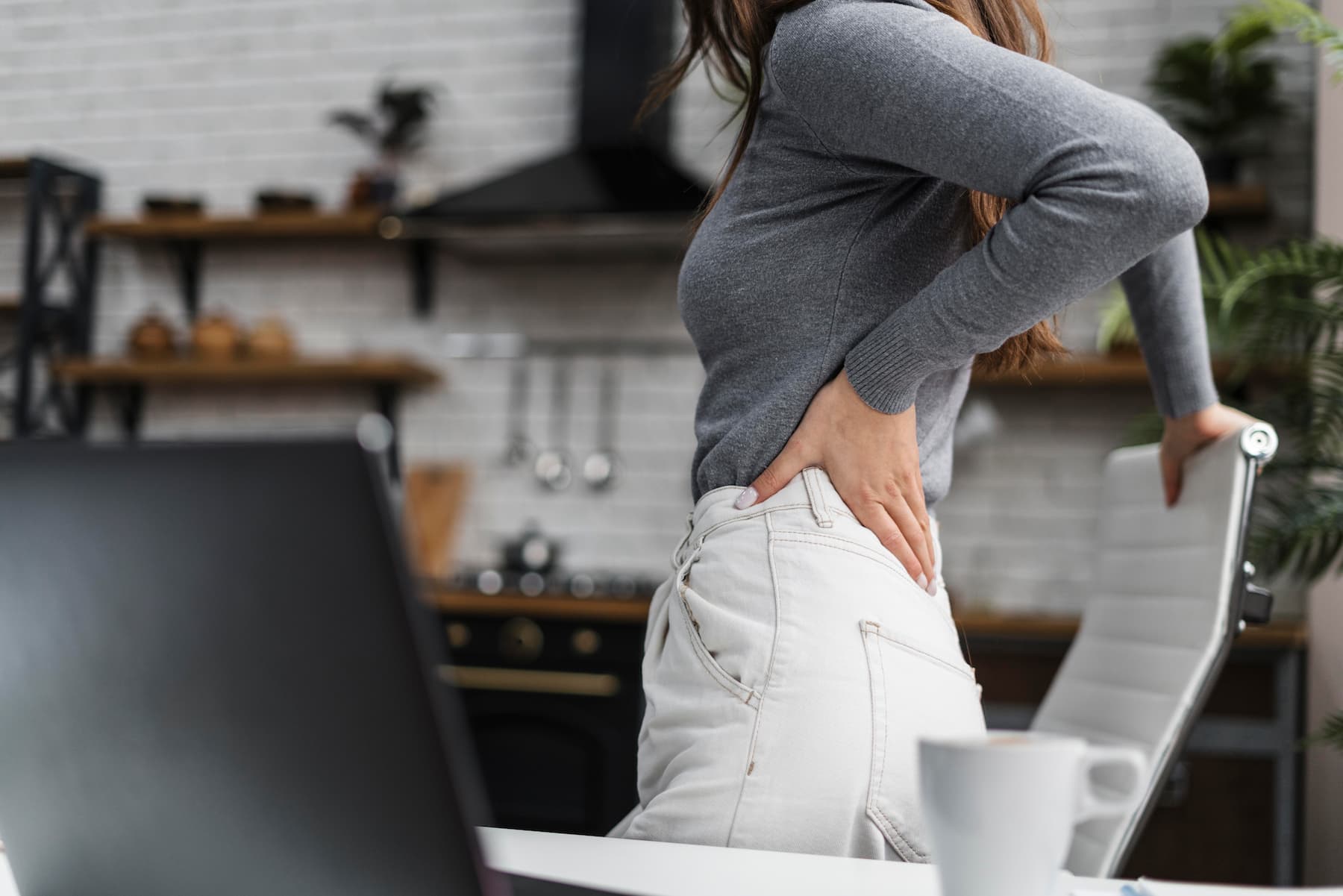
See why hip joints hurt and how to treat their ailments.
